Augmented reality vs “architecture fiction”
Posted Under: Uncategorized
Recently I had the pleasure of giving a brief talk about the Hypothetical Development Organization at the excellent Grand Arts, in Kansas City. In preparing for that, I was doing a lot of research to try and figure out how I want to define “architecture fiction,” and along the way I started collecting possible examples involving “augmented reality.” Whether these examples really count or not (beside the point for the moment), I wanted to collect my thoughts on that particular diversion somewhere.
Thus this post.
I wrote about augmented reality in Consumed back in November 2009, but most of the examples that I could find at the time didn’t really interest me that much. (Basically augmented reality refers to data overlaid on what you see when you peer at the world through your cell phone – Yelp reviews floating in front of a restaurant, that sort of thing.)
But looking around again more recently I found more stuff that I found at least potentially interesting. Each of the following examples strikes me as compelling on some level, and maybe hinting at interesting things that might be done in connection with, oh, I don’t know, something like Hypothetical Developments. I welcome other examples or reactions, naturally.
First up: Irene Cheng and Brett Snyder created an app called Museum of the Phantom City. In this case, the user gets information about proposed utopian projects in New York City that never came to pass.
Unbeige explained: “Using GPS, you can use the app to wander around the streets of NY and absorb a little history about what never was as you come to it, along with some interactive bits surrounding these invisible sights.”
Next: The Streetmuseum app, which adds historical information and images to geographic locations. I believe it is London-specific at this point. (I doubt that the above example is how it really looks when you actually use the app.) Bruce Sterling is a fan.
The above, Tamiko Thiel’s “Art Critic Matrix,” was part of a show called “We AR in MOMA,” which used the Layar augmented reality browser. Basically this was a show set geographically (and without permission, for what it’s worth) inside MoMA, but that could only be seen through a smartphone.
Finally, this is something called ARStreets, characterized as a “location-based game” for the iPhone. Basically you can add a graffiti-style “tag” to a place, visible only to other users of this app. I’m not really crazy about this, but it seems to count as an example of … whatever the hell I’m talking about.
What I’m trying to figure out is whether we can do something like for this Hypothetical Development: If someone who visited one of our sites could see, on their smartphone, our rendering of that building’s Hypothetical future, and read our description. Seems like this would be do-able, no?




 "
"

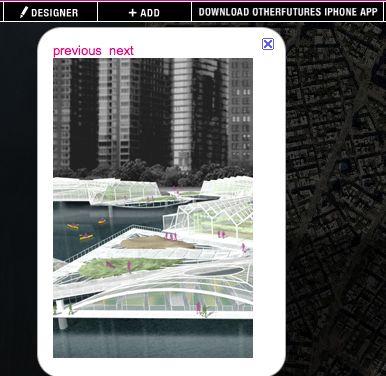
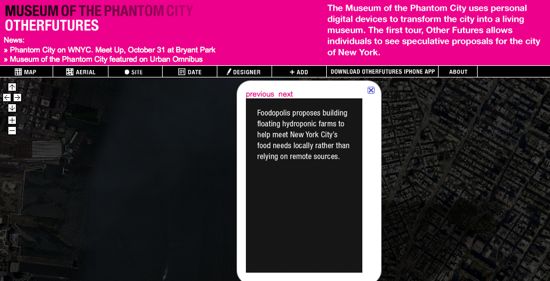
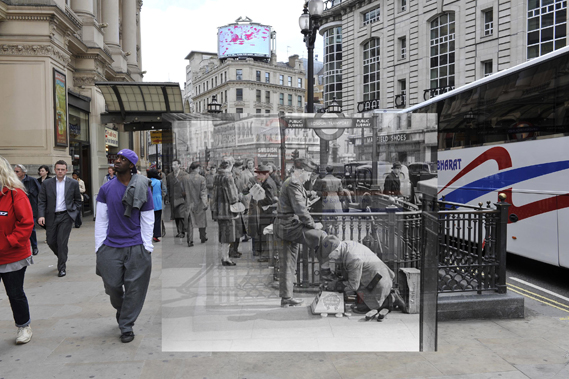
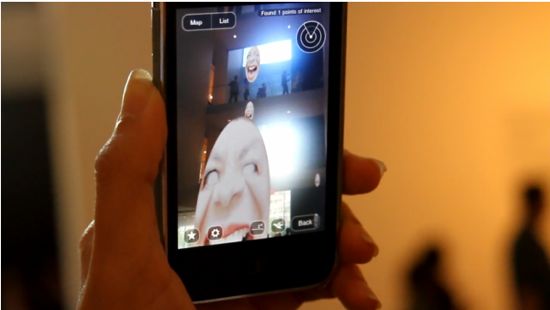
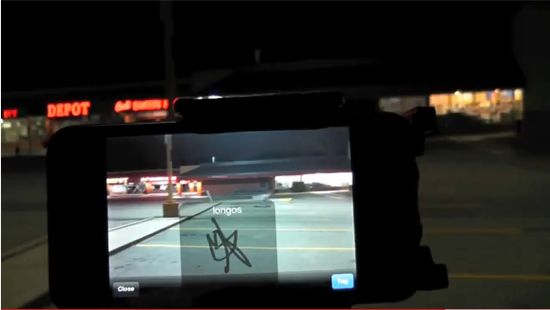












 Kim Fellner's book
Kim Fellner's book  A
A
Reader Comments
Cool project. Seems pretty plausible to me, especially if the tech is there for the apps you mentioned above.
Re The Streetmuseum app- I had heard last year that Microsoft was trying to do something similar on a much larger scale. With Bing Maps they are using creative commons flickr images to overlay real locations- not sure if that’s an app though. Check out the videos on this page: http://www.technologyreview.com/blog/editors/24800/.
It’s a great idea, though I can’t speak to how much work it would take. Precedent: The Netherlands Architecture Institute has created UAR – Urban Augmented Reality (http://en.nai.nl/uar) in partnership with Layar. Ultimately, the iPhone/Android app is supposed to contain all Netherlands architecture, per this Q+A with a fellow at the creative agency that helped build the app: http://electronicmuseum.org.uk/2010/08/20/q-and-a/
A less labor-intensive approach, perhaps, would be to have a Google Map tagged at the various N.O. spots, and then people could be directed to an HDO webpage with more information, a la the Museum Without Walls: http://culturenow.org/MuseumWithoutWalls/
Or you could somehow get a QR code at those spots that would do the same thing. And speaking of QR codes, here’s an example of architecture itself fostering augmented reality applications: the N Building in Tokyo, by Terada Design Architects and Qosmo: http://www.designboom.com/weblog/cat/16/view/8685/augmented-reality-architecture.html
Related: http://www.themobilecity.nl/2010/03/09/augmented-reality-its-promises-and-shortcomings-for-architects/